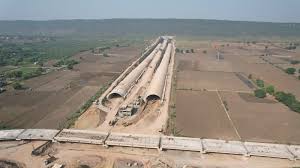Voice from inside one of India’s widest tunnels: ‘Can’t build by fighting with rock’

High in the heart of the Himalayas, amidst snow-capped peaks and treacherous terrain, a marvel of engineering is quietly taking shape. This is not just another infrastructure project. This is one of India’s widest and most ambitious tunnel constructions to date — and deep inside it, engineers are discovering more than just rock and earth.
“This tunnel teaches you patience,” says Rakesh Thakur, a senior project engineer, his helmet dusted with gravel. “You can’t build something like this by fighting the mountain. You have to listen to it.”
The tunnel, part of a massive mountain highway project in northern India, aims to improve all-weather connectivity to remote regions. But the process of building it has become a delicate dance with nature, not a battle.
The Science — and Soul — Behind the Structure
Stretching over 12 kilometers, the tunnel will be one of the widest road tunnels in the country, allowing for two-way traffic, emergency lanes, and ventilation ducts. It is a feat of precision planning, where every inch of progress requires detailed analysis of the geology above.
“We are working under millions of tonnes of rock,” explains geotechnical expert Meena Rawat, who monitors rock stability daily. “Every shift, we assess the rock’s mood — how it’s responding to the last drill, where the fault lines are. If you ignore these signs, nature pushes back.”
The work is being done using the New Austrian Tunneling Method (NATM), a system that adapts to ground conditions in real-time. Unlike older, rigid methods, NATM allows engineers to adjust their plans based on rock pressure, moisture, and vibrations.
“You think engineering is about control,” Rawat adds. “But here, it’s more like cooperation.”
Harsh Conditions, Hard Lessons
The tunnel site is remote and grueling. Workers battle sub-zero temperatures in winter, sudden landslides during monsoon, and oxygen-thin air year-round. Getting machinery and materials to the site alone was a herculean task.
“Some days, we couldn’t even see the road because of fog or snow,” says Ram Pratap, a tunnel boring machine operator. “Still, we came. We knew this tunnel would change lives.”
Indeed, once completed, the tunnel is expected to cut travel time between key towns in the region by hours and provide critical year-round access to areas that are often cut off during winters. For the Army and local residents alike, this means better connectivity, faster logistics, and potentially life-saving benefits in emergencies.
But the price of progress is steep. Just last year, an underground water burst delayed work by nearly two months and flooded parts of the tunnel, forcing engineers to redesign support systems.
A Blend of Tradition and Technology
Interestingly, modern technology isn’t the only guiding force here. Local knowledge, passed down by generations of mountain dwellers, has helped the engineers navigate tricky patches of terrain.
“We consult villagers before any major blasting,” says Rakesh. “They know the mountain’s behavior — where the snow melts first, where the ground rumbles during rain.”
In fact, before construction began, a group of local elders performed a small ritual at the tunnel entrance, offering prayers to the mountains. “We may build with machines, but we begin with respect,” Rakesh says with a quiet smile.
Women at the Helm
In what is still considered a male-dominated sector, the tunnel project also stands out for another reason — its team of women engineers and scientists.
“I grew up hearing tunnels were no place for women,” says geologist Meena Rawat. “But now, I’m part of the core team that ensures this one stays safe. That’s progress.”
Their role is not symbolic — women are leading geology teams, overseeing tunnel support structures, and managing safety protocols.
The Voice from Within
As the tunnel nears completion, now more than 70% done, a strange kind of silence echoes inside — not the absence of sound, but a peace that comes from working in harmony with nature.
“You stop hearing the machines after a while,” says Ram Pratap. “But you hear the mountain — how it shifts, how it breathes. It tells you how to work.”
This sentiment is shared by almost everyone involved. While the tunnel stands as a testament to India’s infrastructure ambitions, its real legacy might be something less visible — a deeper understanding of how progress and nature can coexist.
“We’re not conquering the mountain,” says Rakesh. “We’re passing through, gently.”
Conclusion: Building the Future, Gently
India’s engineering projects are growing bolder, taller, and deeper — from expressways to undersea cables. But this tunnel, carved into the Himalayan rock, stands apart.
It’s a story of quiet resilience, where science meets spirit, and where progress isn’t about overpowering nature but working with it.
As the final layers of concrete are set and ventilation systems hum to life, the message from inside the tunnel is clear:
“You can’t build by fighting with the rock. You must build by understanding it.”






